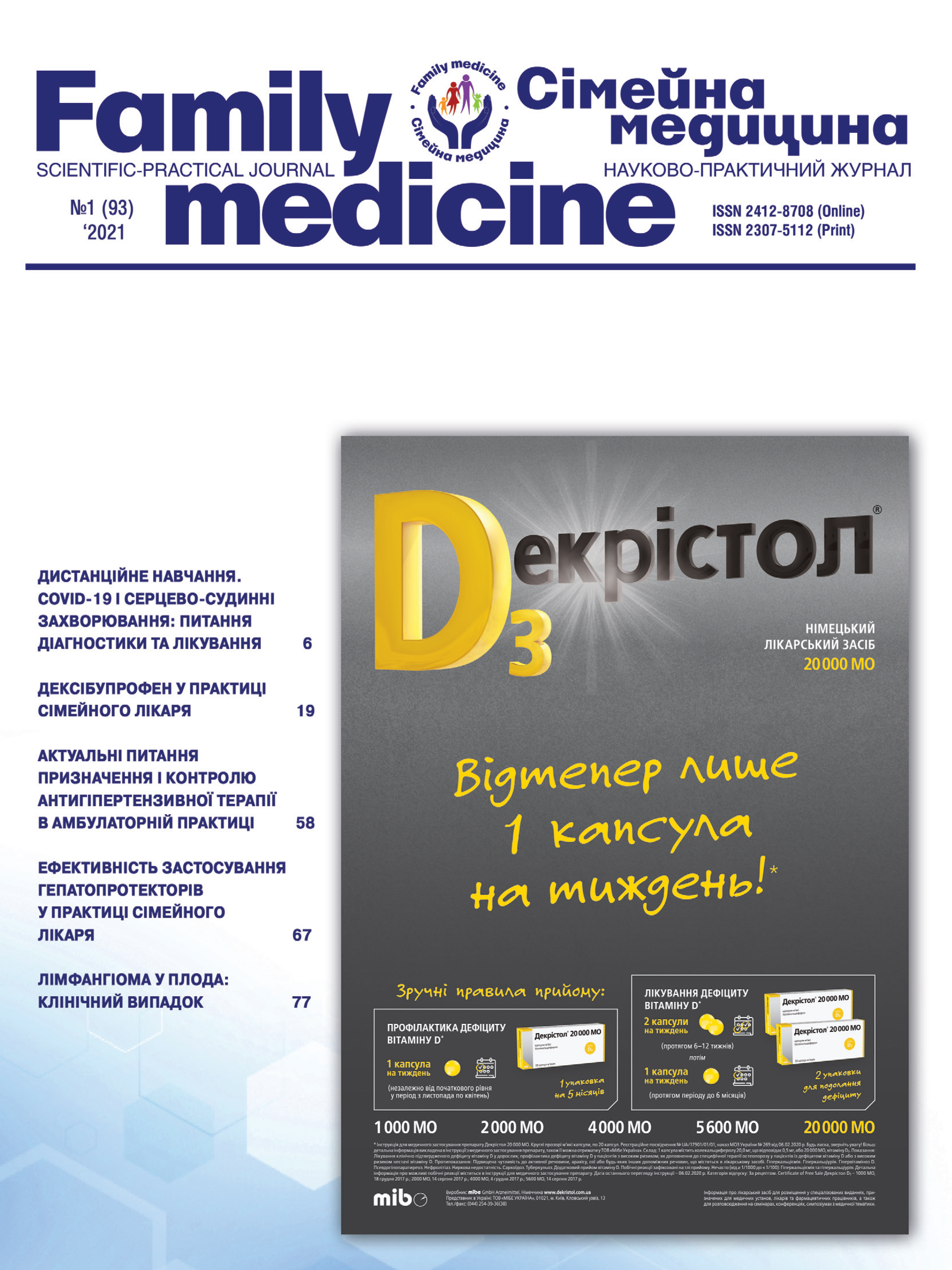Plasma Hemostasis in Patients with Essential Hypertension and Non-alcoholic Fatty Liver Disease Under Conditions of Hypercholesterolemia and Concomitant Statin Therapy
##plugins.themes.bootstrap3.article.main##
Abstract
In the modern scientific world, it has been proven that non-alcoholic fatty liver disease (NAFLD) is a marker of the risk of cardiovascular (CV) events, and therefore, attention and control of risk factors for CV diseases is important. Considering the prevalence of atherogenic dyslipidemias and their proven effect on the development of thrombotic CV complications in patients with NAFLD, it is important to understand the role of hemostatic blood activity.
The objective: To increase the efficiency of early diagnosis of thrombophilic changes in the blood in patients with essential hypertension (HT) combined with non-alcoholic fatty liver disease by determining the state of plasma hemostasis in conditions of hypercholesterolemia and concomitant statin therapy.
Materials and methods. 152 patients were examined. Patient groups: I – 46 patients with stage II hypertension, II – 54 patients with NAFLD without hypertension, group III – 52 patients with stage II hypertension with concomitant NAFLD.
Results. The growth of prothrombogenic activity of the blood among all groups of patients, however, with HT II stage, combined with NAFLD, the most significant effect was carried out precisely on the final stages of coagulation. An increase in the level of fibrinogen was observed in patients with grade II hypertension. by 29,3 % (p<0,01) and with a combination of HT and NAFLD by 39,7 % (p<0,001). The levels of soluble fibrin-monomeric complexes in all groups were significantly higher than the control values: in patients with hypertension. – 4,1 times (p<0,001), with NAFLD – 2,8 times (p<0,001), in the NAFLD group with hypertension – 4,5 times (p<0,001). Antithrombin III (AT III) was reduced by 12,3 % (p<0,01) relative to the control only in patients with hypertension. On the other hand, the fibrinolytic potential was reduced among all examined groups. Determination of the effect of lipid-lowering therapy revealed an acceleration of prothrombin time (PTT) by 19.2 % (p<0,01) in patients with NAFLD without statin treatment. In the general cohort, statin use increased the activity of AT III by 10,7 % (p<0,01), but in the NAFLD group, this difference was more significant – by 14,3 % (p<0,001). In patients with comorbid course of HT and NAFLD with cholesterolemia level <5 mmol/L, we observed an increase in PTT by 32,5 % (p<0,05), INR by 25,4 % (p<0,05) and thrombin time by 23,2 % (p<0,05) during statin therapy. On the other hand, in the subgroup with hypercholesterolemia, statins increased the activity of the anticoagulant link of hemostasis – the level of ATIII increased by 3,1 % (p<0,05).
Conclusions. Depletion of the fibrinolytic potential against the background of activation of the coagulant hemostasis link is observed in patients with hypertension combined with NAFLD. In the case of concomitant hypercholesterolemia, the procoagulant activity of the blood increases, however, against the background of treatment with statins, there is a decrease in the coagulation potential of the blood and an increase in the activity of the anticoagulant link of hemostasis.
##plugins.themes.bootstrap3.article.details##

This work is licensed under a Creative Commons Attribution 4.0 International License.
Authors retain the copyright and grant the journal the first publication of original scientific articles under the Creative Commons Attribution 4.0 International License, which allows others to distribute work with acknowledgment of authorship and first publication in this journal.
References
Younossi Z.M. Global epidemiology of nonalcoholic fatty liver disease-meta-analytic assessment of prevalence, incidence, and outcomes / Z.M. Younossi, A.B. Koenig, D. Abdelatif [et al.] // Hepatology. – 2016. – Vol. 64, No. 1. – P. 73–84.
Chalasani N. The diagnosis and management of nonalcoholic fatty liver disease: practice guidance from the american association for the study of liver diseases / N. Chalasani, Z. Younossi, J.E. Lavine[et al.] // Hepatology. – 2018. – Vol. 67, No. 1. – P. 328–357.
Toshikuni N. Associations of fatty liver disease with hypertension, diabetes, and dyslipidemia: comparison between alcoholic and nonalcoholic steatohepatitis / N. Toshikuni, M. Tsuchishima, A. Fukumura[et al.] // Gastroenterology research and practice. – 2017. – Vol. 2017: 9127847.
Базилевич А.Я. Неалкогольний стеатогепатит як новий фактор розвитку ішемічної хвороби серця / А.Я. Базилевич // ScienceRise. – 2015. – Vol. 10, No. 3 (15). – P. 171.
Collins R. Interpretation of the evidence for the efficacy and safety of statin therapy / R. Collins, C. Reith, J. Emberson[et al.]. – Lancet Publishing Group, 2016.
Jose J. Statins and its hepatic effects: newer data, implications, and changing recommendations / J. Jose. – Medknow Publications, 2016.
Adhyaru B.B. Safety and efficacy of statin therapy / B.B. Adhyaru, T.A. Jacobson. – Nature Publishing Group, 2018.
Скляров Є.Я. Вплив аторвастатину на функціональний стан печінки у пацієнтів з ІХС у поєднанні з нажхп / Є.Я. Скляров, А.Ф. Файник, Н.В. Курляк // Актуальні проблеми сучасної медицини: вісник української медичної стоматологічної академії. – 2018. – Vol. 15, No. 4 (52). – P. 112–117.
Marchesini G. EASL-EASD-EASO clinical practice guidelines for the management of non-alcoholic fatty liver disease / G. Marchesini, C.P. Day, J.F. Dufour [et al.]. –2016.
Под ред. А.И. Карпищенко. Медицинские лабораторные технологии: руководство по клинической лабораторной диагностике / Под ред. А.И. Карпищенко. – 2013. – 194–241 p.
Мамаев А.Н. Практическая гемостазиология / А.Н. Мамаев. – Практическая Медицина, 2014. – 233 p.
François M. 2019 esc/eas guidelines for the management of dyslipidaemias: lipid modification to reduce cardiovascular risk: the task force for the management of dyslipidaemias of the european society of cardiology (esc) and european atherosclerosis society (eas) / M. François, B. Colin, L.C. Alberico[et al.] // European Heart Journal. – Vol. 41, No. 1. – P. 111–188.





